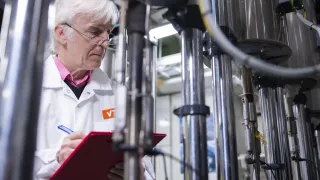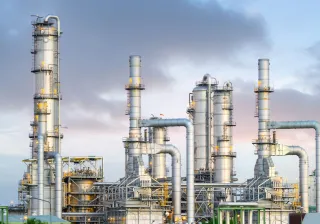There is little doubt that electrification and hydrogen will have a crucial role in propelling carbon neutrality. However, while green hydrogen is making an entrance into a growing number of industries and applications, the process of introducing new technologies into a system that was built for fossil fuels is no easy task. To be successful, companies must carefully rethink how to update, upgrade, or modify their current processes and materials to meet future demands.
Hydrogen economy has huge potential both for individual companies and for national economies. In Finland, both policy makers and industry leaders have expressed their commitment to positioning Finnish industry on the frontlines of the hydrogen revolution. This is good news, since the risk of taking a back seat in the green transformation of industry could be costly both for businesses and the society.
Being bold is a requirement when adopting emerging technologies, but in addition to vision, companies need to take action and start assessing what their role in the transition will be. Expertise on materials performance will be vital for success, no matter whether companies choose to repurpose or upgrade their existing infrastructure, production processes and equipment or develop entirely new solutions.
At VTT, we believe that the potential of hydrogen economy for companies will far outweigh the challenges with the transition. Replacing fossil fuels is on everyone’s agenda and postponing the inevitable may also mean handing the advantage to competitors. While there are many great opportunities, there are also many players globally that are eager to secure their share of the emerging market. So, where to start?
Hydrogen brings opportunities and challenge from production to end use
The effects of hydrogen economy will cut through different sectors of society and business and look different for different industries and companies. From power generation to manufacturing, and from shipping to grid stabilization, it is now time for industry players to assess how their business models, infrastructures, and production processes will be made ready for hydrogen economy.
For example, introducing hydrogen as a fuel in hard-to-electrify applications such as marine transport or heavy industries requires carefully exploring which existing infrastructures and machinery are compatible with hydrogen and what changes and upgrades will be needed:
- Can gas pipelines be repurposed for hydrogen?
- Can ship engines built for traditional fuels be modified to safely run with hydrogen and ammonia?
- Which changes or entirely new solutions are needed for companies to adjust their processes and business to successfully adopt new hydrogen-based solutions?
Luckily, companies are not alone in developing new solutions and scaling them up to commercial level. At VTT, our teams combine exceptional expertise in materials with a multidisciplinary knowhow from a wide range of industries and technology areas. We also work with numerous industry partners, universities, and research institutes internationally to develop best solutions for big systemic challenges as well as specific use-cases.
Way forward begins with materials
While hydrogen itself is nothing new under the Sun, introducing it to new industrial processes as a feed stock or energy vector is a challenge that needs to be tackled carefully to guarantee a smooth transition. Hydrogen gas being a highly flammable material, there is no room for error. In addition to focusing on safety – of both people and the environment – every step of the way, it is crucial to consider how changes in processes may affect the durability, reliability and maintainability of infrastructure, machinery, and equipment. All of this requires a profound understanding of materials and materials performance.
In the process industry it goes without saying that unplanned production downtime is costly, and therefore understanding and predicting materials performance across their lifespan is crucial. To assess how materials interact with hydrogen, and to carry out sound analysis, it is vital to understand customer’s process, historical and planned operating conditions, as well as be able to carry out in-depth root cause analysis of real material samples from the components to identify appropriate remedial actions.
We help businesses do just that. We work closely with our customers to understand and prepare for the challenges that future processes pose to their materials – no matter what your role in the hydrogen economy will be. If you’re interested in hearing more from our experts about hydrogen production and electrolysers, transport and storage, or use of hydrogen in industrial processes, watch our webinar on this topic.







